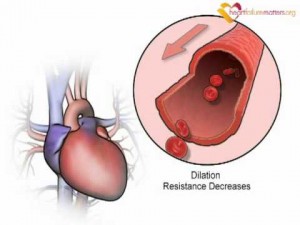Health and Care: Centrally acting drugs
Vasodilators
Hydralazine
Hydralazine is a peripherally acting vasodilator that relaxes vascular smooth muscle. There are very few reports of undesired effects on sexual function and most of these implicate combination therapy such as hydralazine and propranolol or hydralazine and a thiazide diuretic. There has been one report of priapism developing during hydralazine therapy and the suggestion has been made that the drug even has aphrodisiac properties. However, this occurred in a patient who was changed from a thiazide diuretic (known to cause decreased libido) to hydralazine
(Stevenson & Umstead, 1984).
Diuretics
Thiazides
Thiazides act by producing a reduction in blood volume associated with initial diuresis. Thereafter, a sustained vasodilator action is probably responsible for their effects. A Medical Research Council Working Party in 1981 reported a 16% incidence of impotence in patients taking thiazide diuretics after 12 weeks of treatment (Medical Research Council Working Party, 1981). A recent randomised study of diuretics in mild hypertension showed a significant increase in sexual dysfunction compared with placebo. This was still observable after controlling for confounding factors such as older age, diabetes mellitus and use of other (non-diuretic) antihypertensive therapy. The disorders noted included a reduction in libido, difficulty in obtaining or maintaining erection and problems with ejaculation. Patients on diuretics were two to six times more likely to experience sexual dysfunction than those on placebo (Chang et al.9 1991). Reduced vaginal lubrication has been described in females. A recent large multicentre study evaluated the effects of a thiazide diuretic (chlorthalidone), atenolol and different diets on sexual function. In a group of men on their normal diet receiving chlorthalidone, 28% experienced problems with erection compared with 3% of those on placebo and a normal diet. However, men on chlorthalidone with a weight-reducing diet were less affected. In this study, the authors specifically questioned women about sexual side effects. In the group of women treated with chlorthalidone, 22% of those on a normal diet but only 8% of those on a weight-reducing diet had a worsening of their sexual problems. This illustrates the multifactorial influences on sexual function in hypertensive individuals.
A recent study of men starting antihypertensive medication for the first time demonstrated a significant increase in anorgasmia within 30 days of commencing medication in men receiving hydrochlorthiazide (Kroner, Mulligan & Briggs, 1993). The mechanisms behind the sexual side effects are not readily apparent as thiazides lack significant hormonal, autonomic or central nervous system effects. Decreased peripheral resistance has been suggested, but sexual side effects have not been reported with vasodilators that have a similar mode of action. It has also been proposed that it may be the result of a direct effect of thiazides on smooth muscle or by interference with catecholamine responsiveness.
Spironolactone
This potassium-sparing diuretic has been associated with a variety of sexual side effects. Dose-dependent gynaecomastia is well recognised and occurred in 100% of patients treated with 400 mg/day (used to differentiate primary from secondary hyperaldosteronism); 30% also developed impotence. Both recovered following discontinuation of spironolactone (Spark & Melby, 1968). Similar effects have been less commonly reported on lower doses of 50-100 mg/day (Buffum, 1982; Smith and Talbert, 1986). The 400 mg study also included women all of whom developed menstrual irregularities.
Spironolactone is an antiandrogen (it is also used in the treatment of hirsutism) and the adverse sexual effects are probably hormonally induced. It prevents the binding of dihydrotestosterone to androgen receptors, which leads to increased metabolic clearance of testosterone and increased peripheral conversion to oestradiol. In women, the menstrual irregularity is probably related to defective ovulation and could be a cause of subfertility. High doses of spironolactone inhibit 17-hydroxylase, which is an important component of the steroid biosynthetic pathway. 17-Hydroxylase blockade causes anovulation in women.
